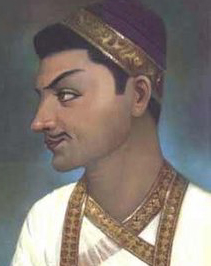History Of Hyderabad City
The city is more than 400 years old and is noted for its many mosques, temples, minarets, bazaars, and beautiful geography. It lies on the Deccan (Dakkan) plateau, 541 meters (1776 feet) above sea level, and sprawls over an area of 260 km² (100 mile²). A multitude of influences have shaped the character of the city. Its palaces and buildings, houses and tenements, gardens and streets have a history and an architectural individuality of their own. This land of 75 million people has an inimitable heritage dating back to times immemorial.
The Rulers of Hyderabad
The area around Hyderabad was once part of Ashoka’s Empire in the 3rd century BC. Various Hindu kingdoms like the Kakatiyas ruled the area for many centuries, and the region was claimed by both Hindu and Muslim leaders until the late 14th century, when Muhammad Quli Qutb S hah consolidated power and established the fortress city of Golconda nearby.
hah consolidated power and established the fortress city of Golconda nearby.
Hyderabad was founded by Muhammad Quli Qutb Shah on the Musi River five miles east of Golconda in 1591-92. Quli Qutb Shah also ordered the construction of the Char Minar, one of the most famous monuments in the city, in 1591. The Qutb Shahi dynasty founded and ruled the Kingdom of Golconda, one of the five kingdoms that emerged after the break up of the Bahmani Sultanate. All seven Qutb Shahi sultans were patrons of learning and were great builders. They contributed to the growth and development of Indo-Persian and Indo-Islamic literature and culture in Hyderabad. During the Qutb Shahi reign Golconda became one of the leading markets in the world for diamonds, pearls, steel, arms, and also printed fabric. In the 16th century, the city grew spontaneously to accommodate the surplus population of Golconda, which was the capital of the Qutb Shahi rulers.
Charminar History
Charminar is a monument located in the City of Hyderabad which is the capital city of the State of Andhra Pradesh in South India.
Charminar is one of the most important landmarks of the city. The monument was built by Muhammad Quli Qutb Shah in 1591 to commemorate the eradication of plague, shortly after he had shifted his capital from Golconda to what now is known as Hyderabad. Legends tell that the emperor Quli Qutb Shah prayed for the end of plague and took the vow to build a mosque on that very place. He ordered the construction of the mosque which became popular as Charminar because of its four characteristic minarets. The top floor of the four-storeyed structure has a mosque which has 45 covered prayer spaces and some open space to accommodate more people in Friday prayers

Muhammad Quli Qutb Shah ,sultan of the Qutb Shahi dynasty, ruled from Hyderabad. The Charminar is a beautiful and impressive square monument, with each side measuring 20 meters, and each of the edges having a pointed high minaret.It derives its name from these four gracefully carved minarets which soar to a height of 48.7 m above the ground, commanding the landscape for miles around.
Charminar literally means ‘Four Minars’. Each minaret has four stories, each looking like a delicately carved ring around the minaret. Every side opens into a plaza through giant arches, which overlook four major thoroughfares and dwarf other features of the building except the minarets. Each arch is 11 m wide and rises 20 m to the pinnacle from the plinth. Once upon a time each of these arches led to four royal roads. Each of the four arches has a clock which were put up in 1889.
There are two galleries within the Charminar, one over another, and above those a terrace that serves as a roof, bordered with a stone balcony. It is vaulted underneath and appears like a dome. There is a large table raised seven or eight feet from the ground with steps to go up to it. Nothing in the town seems so lovely as the outside of that building
A thriving market still lies around the Charminar attracting people and merchandise of every description. In its heyday, the Charminar market had some 14,000 shops, a unique conglomeration of a grand oriental bazaar.The whole market around the Charminar is crowded with shops which sell glass bangles in rainbow colours.
Unlike Taj Mahal, the fluted minarets of Charminar are built into the main structure. Inside the four-storied minarets 149 winding steps guide the visitor to the upper floor, the highest point one can reach, and providing a panoramic view of the city. There are 45 prayer spaces with a large open space in front to accommodate more for Friday prayers.
Built with granite and lime mortar, Charminar is a fine example of the Cazia style of architecture. The Charminar looks spectacular particularly in the nights when it is illuminated.
